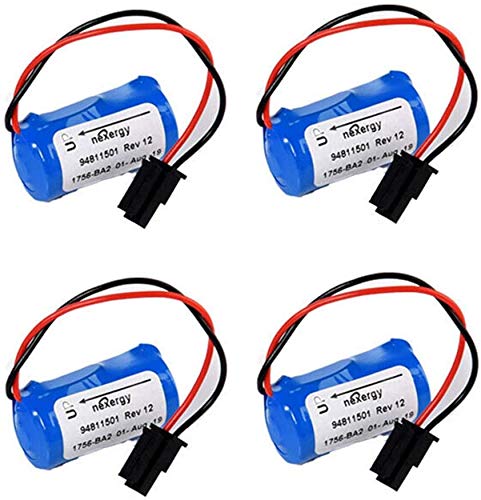
Everything You Need to Know About PLC Batteries
Programmable Logic Controllers (PLCs) are rugged computers designed to automate industrial processes ranging from wastewater treatment to manufacturing. These controllers perform logical operations to control machines and processes reliably in harsh environments. Among their essential internal components is the PLC battery, which plays a critical role in system reliability and memory preservation.
Why Do PLCs Need Batteries?
The primary role of a PLC battery is to maintain data in non-volatile memory such as EPROM during a power outage or maintenance shutdown. This includes:
-
PLC logic programs
-
Real-time clock settings
-
Configuration data
-
Process set points
The battery prevents memory loss by continuously powering the processor memory even when the main power supply is cut. It is often referred to as the CMOS battery, RTC battery, or backup battery.
Types of PLC Batteries
The most commonly used PLC batteries include:
-
Lithium-Thionyl Chloride (Li-SOCl2): Long-lasting and ideal for low-current applications
-
3.0V and 3.6V Lithium Cells: Standard voltage variants, used singly or in series for higher output
PLC batteries may come in two configurations:
-
Capacitor assemblies: Offer short-term memory backup (up to 72 hours)
-
Lithium batteries: Provide longer-term memory retention (2 to 5 years)
How Long Do PLC Batteries Last?
Typically, lithium batteries in PLCs last 2–5 years. Their longevity depends on:
-
Frequency and duration of power outages
-
Ambient operating temperature
-
System uptime vs. downtime
-
Age and type of the PLC
What Happens if a PLC Battery Dies?
If the main power remains uninterrupted, a dead battery won’t cause immediate failure. However, during a power outage, a drained battery can result in complete loss of:
-
Programmed logic
-
Clock settings
-
System configurations
This could lead to extended downtime, costly reprogramming, and even system damage.
How to Check PLC Battery Status
Many PLCs have a BATT LED on the CPU module that alerts you when the battery voltage falls below the threshold:
-
OFF: Battery OK
-
Yellow/Red/Flashing: Battery voltage is low
To check battery status:
-
Open the system controller drawer.
-
Inspect the BATT LED on the CPU.
-
If the LED is active, replace the battery soon.
How to Replace a PLC Battery
General Steps:
-
Locate the Battery: Usually mounted on the front or inside of the CPU module.
-
Power Consideration:
-
If accessible without removing the CPU, power can remain ON.
-
If removal is needed, power down unless the PLC uses supercapacitors.
-
-
Release the Battery: Use the module clips or unscrew as necessary.
-
Install New Battery: Match the voltage, current, and compatibility.
-
Secure the Module: Reinstall the CPU and restore power if needed.
-
Dispose of Old Battery Properly: Follow hazardous material disposal guidelines (double bag with calcium carbonate for lithium cells).
How to Test PLC Battery Voltage
Using a Digital Multimeter:
-
Set the multimeter to DC Voltage (VDC).
-
Place red probe on the positive (+) terminal and black on the negative (-) terminal.
-
Take note of the reading:
-
3.0V battery: >3.0V (good), 2.0V–2.5V (needs replacement soon), <2.0V (replace immediately)
-
3.6V battery: >3.6V (good), 2.4V–2.9V (low), <2.4V (replace now)
-
Summary
PLC batteries are vital for memory retention and system reliability. Regular checks of the BATT LED and voltage readings can prevent unexpected downtime. Batteries should be replaced every 2–3 years or as soon as low voltage warnings appear. Always consult the specific user manual for exact battery specifications and replacement procedures.
For more information or help selecting the right battery, contact PLG Automation:
Email: sales@plgautomation.com
Phone: 800-906-9271
